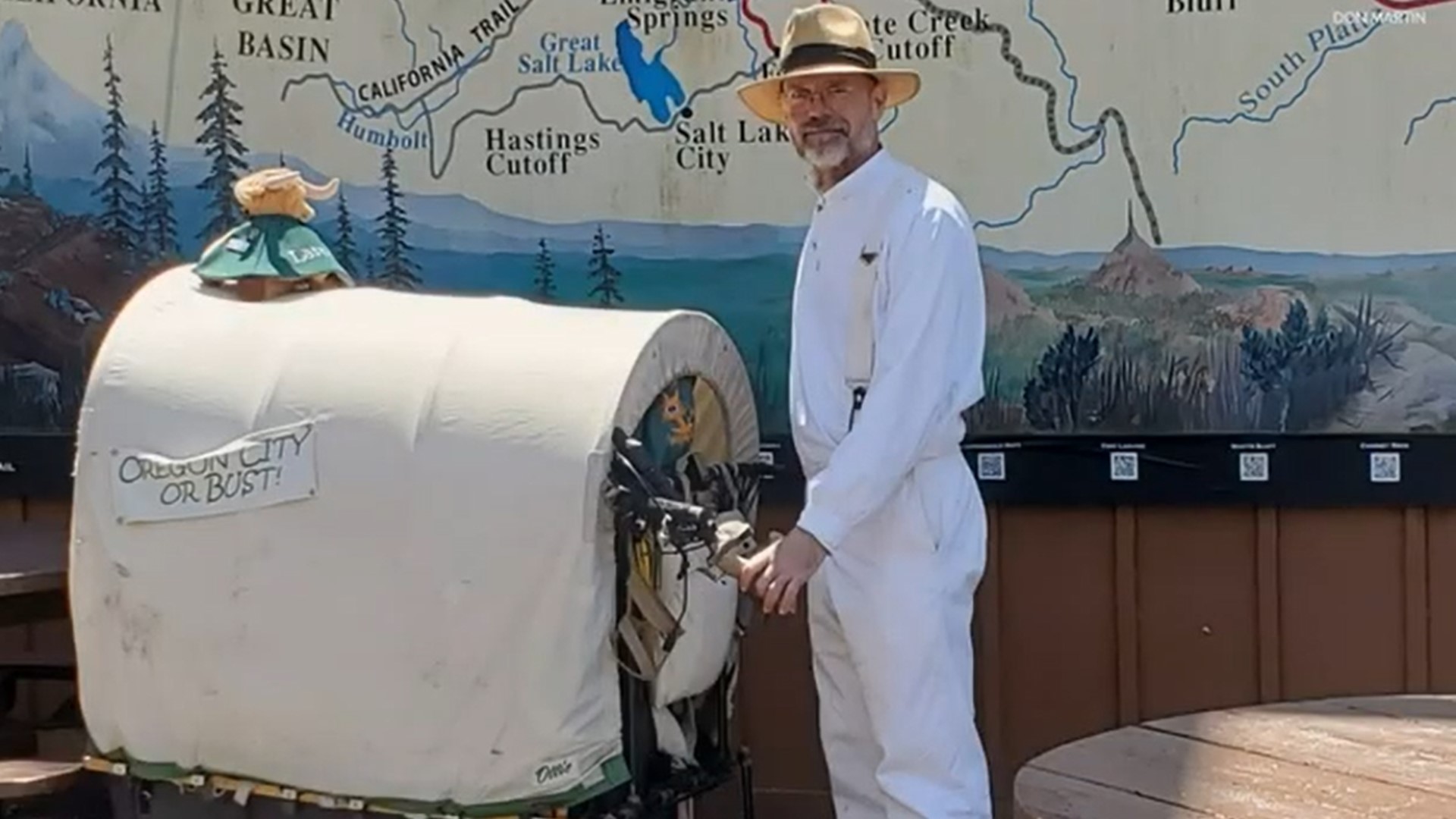PRINEVILLE, Ore. — When you hear the name Oregon Trail, you might think of the low-tech computer game and contemplate death by dysentery. But for Don Martin, hiking the 2,000-mile stretch connecting Independence, Missouri to Oregon City is more than an old video game. It’s a dream realized.
"It was time to hike the whole trail," said Martin, who lives in Prineville, Oregon and spent 30 years in the Navy. He set off in April, documented the three-month journey along the way, and arrived in Oregon City on July 20. But given history, Martin doesn’t expect a pat on the back for his accomplishment.
"Tens of thousands of 8-year-olds made this trip and most of them did it barefoot," Martin said. "That kind of puts what I did in perspective. It was hard but it wasn't that hard."
On his journey, Martin traveled alone except for his homemade supply wagon named "Ollie," and a stuffed ox — a nod to the children’s game catchphrase, "Olly olly oxen free." Weather permitting, Martin camped under the stars. During storms and high-wind events he hunkered down in motels. Some of his most memorable moments on the trail include coming around a bend to his first good view of Mount Hood, and seeing the rock formations in Nebraska like Scotts Bluff.
"For a lot of people who came from farms in the Midwest, they had never seen anything like this in their lives," Martin said. "This was magical to them and it's still magical today. So the remarkable thing is why is it so hard today and why have we forgotten it so completely?"
Wagon ruts are still visible in some spots but most of the Oregon Trail is gone now, turned into roads or plowed over. And unlike the Appalachian and Pacific Crest Trails, there are few published trail guides for the Oregon Trail. Martin said he knows of less than a dozen people who've hiked it in recent decades, and he wants that to change.
"One of the things I'm doing is trying to put together a trail guide for people who want to do the same thing," Martin said. "Reconnect with that experience of the pioneers that made the whole western United States possible."
While modern-day shoes are softer and roads are much more firm, Martin said he believes the key to crossing the Oregon Trail remains largely unchanged across history.
"Then and now it was simply putting one foot in front of the other," Martin said, "and not stopping until you got to the end."

